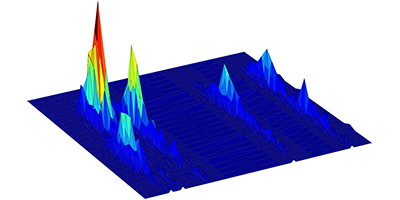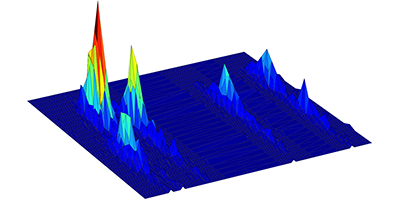Picking Nuclei with Lasers
The study of atomic nuclei with alpha, beta, and gamma-ray spectroscopy can elucidate details of nuclear structure, from the ordering of shell-model levels to the exact shape of the nuclei. Even nuclei far from stability, i.e., with short lifetimes, can be studied by creating them with nuclear reactions at large accelerators and delivering them quickly (sometimes within just milliseconds) to a measurement apparatus. Although different isotopes can be separated with magnets, a great experimental challenge is posed by the fact there are often several isomers present in a beam, which makes it hard to determine which radiation came from which isomer. As reported in Physical Review X, a research team led by Kieran Flanagan of the University of Manchester, UK, has demonstrated a new method that uses isomer-selective laser ionization to isolate a pure sample of each isomer and deliver it to a spectroscopy chamber.
The scheme allowed the authors to separate different states and study in detail the neutron deficient isotopes of francium (Fr): Fr. The nuclear g factors were also determined by resolving the hyperfine levels of each isomer’s atomic ground state. The measurements, carried out at the ISOLDE radioactive ion beam facility at CERN, showed that, as neutrons are removed from the closed shell at N= , Fr isotopes begin to lose their spherical shapes sooner than the corresponding Pb isotopes with the same neutron number because of the polarizability of the additional protons outside of the Z= shell. The method, which should allow work with isotopes even further away from stability, opens up many new possibilities, including further studies of Fr and of other elements such as copper, polonium, and gallium. – Gene Sprouse





